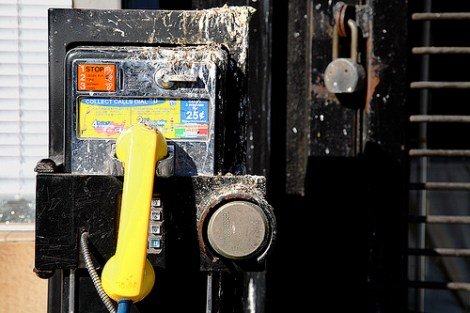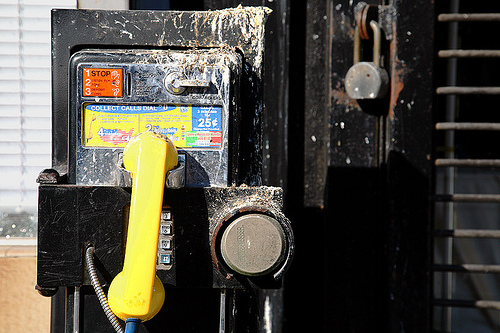
shooting brooklynClearly this is not being used for its intended purpose.
New York City is trying to figure out what to do with its now-useless public pay phones, which currently serve primarily as street-level billboards (i.e. advertising revenue for the city), urinals, and as places for teenagers and drunk people to make out.
But Atlantic Cities has a better idea for repurposing the phone booths: turn them into charging stations for electric vehicles. Eric Jaffe writes:
Part of the reason so few EV stations exist in urban areas is the scarcity of parking. But another big reason is that tearing up city sidewalks to run conduit is extremely expensive, says Jay Friedland of Plug In America. Using old phones for this new purpose takes that cost out of the equation.
Right now, driving electric vehicles in cities makes sense — you’re not going very far, and electric cars don’t go very far, either. But charging them doesn’t, because, in a city like New York, most people don’t have garages in which to install a charger. The only drawback of installing them in pay phone booths is that the electricity to the booths is only strong enough to power a charger that takes a few hours to juice up an EV, instead of newer quick-chargers that take only 15 minutes, Jaffe explains.
But for NYC car owners skilled in finding a spot and leaving their car there as long as humanly possible (that is, until alternate side parking kicks in), it shouldn’t be too hard to find a charge spot and hog it until their car’s battery is full. Inevitably, the main problem will be the interminable Brooklyn community meetings in which rich EV owners argue that those spots should be reserved for them exclusively and formerly drunk teenagers show up to argue that the phone booth should stay exactly as they are, in perpetuity, in order to preserve the historical character of the neighborhood.




